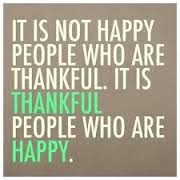Welcome to Week Two
Gratitude: How and Why?
Hi and Welcome to the second week of 'Worry to Wonder'. Last week you were introduced you to the three Foundational Practices. I hope you enjoyed putting them into practice and promoting your happiness, peace of mind and confidence Your job this week is to keep going with all three practices. This week we will deepen our understanding of gratitude. Developing a gratitude practice is one of the three foundational practices which are guaranteed to help you take control of creating the causes for your contentment, confidence and peace of mind. Lets learn some more about it.
REMEMBER to keep doing all 3 practices - Gratitude, Meditatiom and Kindness and continue record them in your Workbook each day this week
Gratitude
REMEMBER to keep doing all 3 practices - Gratitude, Meditatiom and Kindness and continue record them in your Workbook each day this week
Gratitude
- Being happy does not make us grateful. It is gratitude that makes us happy
- Brings a sense of fulfillment and happiness; instantly makes us happier
- Is a state of mind we cultivate in ourselves
- Promotes a positive outlook and helps us notice the positives all around
- Helps us understand that often our greatest challenges bring us our greatest lessons and opportunities to grow
- Helps us overcome the unhelpful habit of blame
- "Opens the door to the power and creativity of the universe" Deepak Chopra
We are all interdependent. We are not independent, isolated individuals, even though we often think we are.. Realising the truth of our interdependence allows us to understand how we are all connected and to be grateful for everything others are doing for us all the time. We would not be here at all or be able to survive for a second without the kindness of others. How could we exist, eat, have shelter, an income, be a parent, son or daughter, travel anywhere or maintain our health, if it were not for others? When we stop to think about our amazing lives and all that we have and all the kind things others are doing for us all the time we realise it is not too difficult for us to be grateful. All we really need to do is to look around us and notice.
We all know how good it feels when others express their thanks to us, we can remember this and do the same for them, which makes us all happy.
In time we can work up to being grateful for challenging times that allow us to develop helpful habits and grow. Challenging times including when others hurt or irritate us allow the opportunity to develop wise helpful ways to think, such as with compassion, patience and forgiveness. Remember when we forgive we heal and when we let go we grow.
Gratitude can be a very useful practice for helping overcome that unhelpful habit of feeling prideful, or better than others. Whenever we feel pleased at having achieved something, instead of feeling superior, we can feel grateful for all those who made it possible for us to be able to achieve what we did. We are then able to feel pleased and promote our humility.
Contemplating impermanence, the fact that all things are a changing process and not permanent fixtures, including us, motivates us to be grateful for and appreciative of each new day. Living every day as if it is our last helps us feel motivated to make the most of every new day.
Gratitude Bottom Line
Things to do this week
1. Gratitude contemplation
Read through the notes above or in the Workbook on page 5.
What resonates with you? What are your thoughts related to gratitude? How does it make you feel when you are grateful or when others are grateful to you?
Respond to these questions in your Workbook.
Notice and be mindful of and grateful for the kindness of others this week. For example
- Who woke at 5am to milk the cows for your milk this morning?
- Who drove the tram, bus, train or car that got you places today?
- Who farmed, made, paid for and served your food, made your clothes, books, shoes, pens, car, bike, roads, paths houses etc?
- Who is supporting, caring for, encouraging, teaching, parenting, guiding you?
Use your creativity and have fun noticing, recalling and writing about all that you are grateful for and how it makes you feel when you are grateful in your Workbook.
2. Every morning this week list at least three things you are grateful for in your journal
You can start now. Under Week 2 Day 1, Wake up Grateful
Remember to have fun, be creative and think broadly.
You can keep your journal with you and add to it during the day or you may prefer to leave it at home and fill it out each morning only.
How does it make you feel when you are grateful? Write this down in your journal too
3. Think about how you currently feel when you wake up in the morning?
Do you spring out of bed ready to start the day with enthusiasm or do you wake up with dread and a feeling of gloom?
Write this in your Workbook Week 2. Day 1. and each day this week
It may be interesting to reflect back in time to see if this is changing with your new morning gratitude practice.
Wake up grateful.
4. A Note of Thanks
Many people have shown us great kindness throughout our lives. it is good for our minds when we recall such kindness and think about
- What they have done
- The positive effect they have had on us and our lives
- How we can express our thanks to them
Write a note of thanks to someone each day this week. This note can be
- A couple of words, a sentence or a letter (Thank you Mrs Southeast the best grade 3 teacher ever)
- To someone you know or don't. Someone who is living or not
- Written in your journal, on a note, letter, card, post it note, texted or emailed
- Sent to or given to the person or not
- Anonymous or not. Careful not to stress your person, with wondering who??
5. Finding the Positives Exercise
Sometimes it is hard to be grateful for some people in our lives, even those we are close to. All we seem to notice are the negatives and what we are not grateful for. This exercise helps us find the positives, while not denying the negatives. When we make a conscious choice to notice and be grateful for the positivest we begin to see them instead of the negatives.
Draw a vertical line down the middle of sheet of paper (2 columns)
1. On the right hand side list the things you are grateful to this person for
2. On the left hand side list the things you find annoying and are not so grateful for
3. Make a conscious choice to attend only to the positives and not the negatives
4. Write only the positives in your Workbook, (It may be best to rip up the piece of paper with both) read the positves each day and keep a look out for these. You make want to include this person in your thank you notes?
6. Email me
[email protected] with any questions or to tell me how you are going
We all know how good it feels when others express their thanks to us, we can remember this and do the same for them, which makes us all happy.
In time we can work up to being grateful for challenging times that allow us to develop helpful habits and grow. Challenging times including when others hurt or irritate us allow the opportunity to develop wise helpful ways to think, such as with compassion, patience and forgiveness. Remember when we forgive we heal and when we let go we grow.
Gratitude can be a very useful practice for helping overcome that unhelpful habit of feeling prideful, or better than others. Whenever we feel pleased at having achieved something, instead of feeling superior, we can feel grateful for all those who made it possible for us to be able to achieve what we did. We are then able to feel pleased and promote our humility.
Contemplating impermanence, the fact that all things are a changing process and not permanent fixtures, including us, motivates us to be grateful for and appreciative of each new day. Living every day as if it is our last helps us feel motivated to make the most of every new day.
Gratitude Bottom Line
- Being happy does not make you grateful. It is gratitude that makes you happy.
- Gratitude instantly makes you feel happier, promotes a positive outlook and gives you a sense of fulfillment
- You can’t be grateful and unhappy at the same time, or grateful and blame at the same time. Choose to be grateful and be happy
- It’s easy for us to be grateful, our lives are amazing, others are doing kind things for us all the time. All you need to do is notice.
Things to do this week
1. Gratitude contemplation
Read through the notes above or in the Workbook on page 5.
What resonates with you? What are your thoughts related to gratitude? How does it make you feel when you are grateful or when others are grateful to you?
Respond to these questions in your Workbook.
Notice and be mindful of and grateful for the kindness of others this week. For example
- Who woke at 5am to milk the cows for your milk this morning?
- Who drove the tram, bus, train or car that got you places today?
- Who farmed, made, paid for and served your food, made your clothes, books, shoes, pens, car, bike, roads, paths houses etc?
- Who is supporting, caring for, encouraging, teaching, parenting, guiding you?
Use your creativity and have fun noticing, recalling and writing about all that you are grateful for and how it makes you feel when you are grateful in your Workbook.
2. Every morning this week list at least three things you are grateful for in your journal
You can start now. Under Week 2 Day 1, Wake up Grateful
Remember to have fun, be creative and think broadly.
You can keep your journal with you and add to it during the day or you may prefer to leave it at home and fill it out each morning only.
How does it make you feel when you are grateful? Write this down in your journal too
3. Think about how you currently feel when you wake up in the morning?
Do you spring out of bed ready to start the day with enthusiasm or do you wake up with dread and a feeling of gloom?
Write this in your Workbook Week 2. Day 1. and each day this week
It may be interesting to reflect back in time to see if this is changing with your new morning gratitude practice.
Wake up grateful.
4. A Note of Thanks
Many people have shown us great kindness throughout our lives. it is good for our minds when we recall such kindness and think about
- What they have done
- The positive effect they have had on us and our lives
- How we can express our thanks to them
Write a note of thanks to someone each day this week. This note can be
- A couple of words, a sentence or a letter (Thank you Mrs Southeast the best grade 3 teacher ever)
- To someone you know or don't. Someone who is living or not
- Written in your journal, on a note, letter, card, post it note, texted or emailed
- Sent to or given to the person or not
- Anonymous or not. Careful not to stress your person, with wondering who??
5. Finding the Positives Exercise
Sometimes it is hard to be grateful for some people in our lives, even those we are close to. All we seem to notice are the negatives and what we are not grateful for. This exercise helps us find the positives, while not denying the negatives. When we make a conscious choice to notice and be grateful for the positivest we begin to see them instead of the negatives.
Draw a vertical line down the middle of sheet of paper (2 columns)
1. On the right hand side list the things you are grateful to this person for
2. On the left hand side list the things you find annoying and are not so grateful for
3. Make a conscious choice to attend only to the positives and not the negatives
4. Write only the positives in your Workbook, (It may be best to rip up the piece of paper with both) read the positves each day and keep a look out for these. You make want to include this person in your thank you notes?
6. Email me
[email protected] with any questions or to tell me how you are going
Have fun processing gratitude, meditation and kindness over the coming week
Have a great week ahead
I will look forward to hearing from you and emailing you next week.
Maree xx
Have a great week ahead
I will look forward to hearing from you and emailing you next week.
Maree xx



